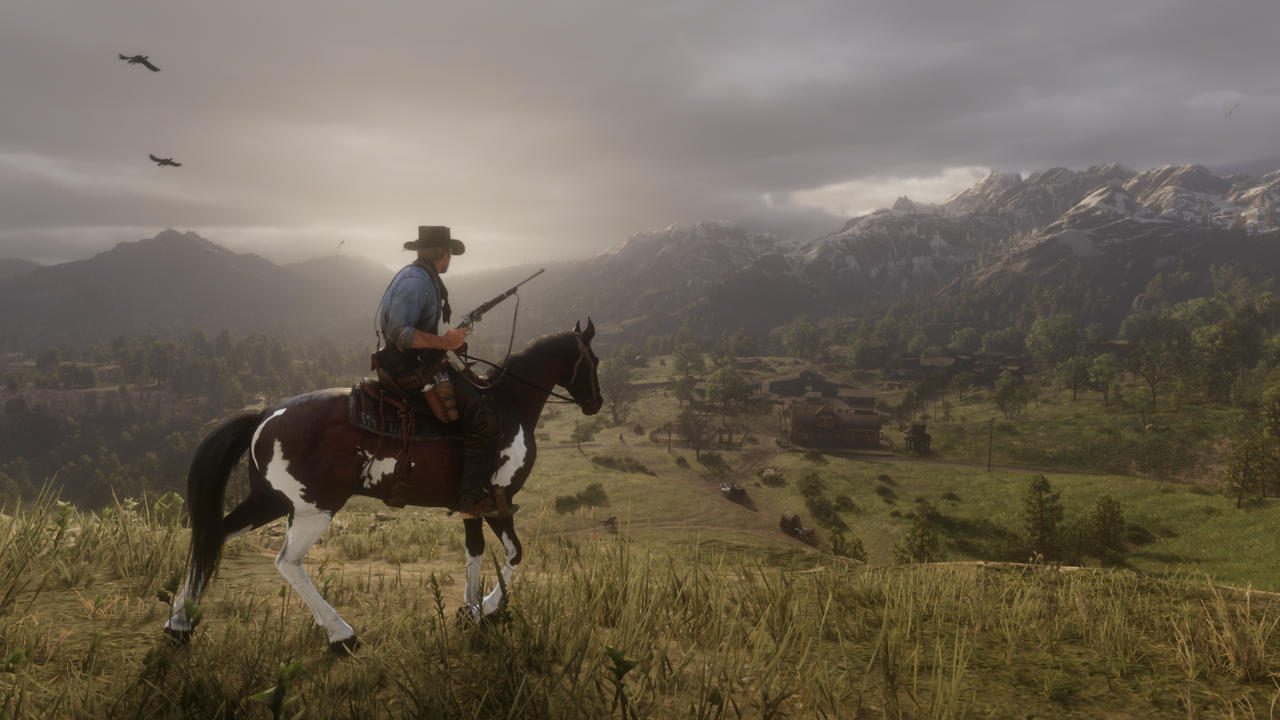By Alex Graf
News Editor
“Red Dead Redemption” may not be a video game franchise, but it sure feels like one. Unlike other brands like “Call of Duty,” “Fallout” and “Assassin’s Creed,” which seem to have a new game out every couple of years, until last month, there was only one “Red Dead Redemption,” which was released in 2010. Yes, it had more than a little in common with 2004’s “Red Dead Revolver,” but the game’s scope, dizzying depth and realism made it feel both unique and sprawling, making it seem like it had several separate bullets in its gaming chamber.
But it took eight years for a second RDR to be made, and its long-discussed arrival made it one of the most hotly anticipated video games in history. And rest assured, fans of Rockstar’s action-adventure western original, you’ll see that the long eight years have been worth the wait. Rockstar has crafted its most complete and immersive open world to date. The narrative is gripping, the quests and activities are diverse and compelling, the world is brimming with life and the environments are jaw-droppingly beautiful. Simply put, RDR II is one of the greatest games ever made.
Rather than a sequel to the original, RDR II is a prequel. The narrative centers around the Van Der Linde Gang, a band of outlaws struggling to stay one step ahead of the law in the year 1899, some 10 years before the original. If you’re familiar with the first game, you know that things do not end well for these people. You’ll also recognize some familiar faces like John Marston, Bill Williamson, Javier Escuella and, of course, Dutch Van Der Linde, leader of the gang.
As the game begins, the gang is on the brink of death; stranded in a blizzard with the law not far behind. Right from the start, the player is filled with an overwhelming sense of dread and despair of the inevitable, perfectly setting the tone for what’s to come.
Arthur Morgan, the game’s protagonist, and the gang he travels with are not good people by any standard. They’re ruthless murderers and thieves. They are relics of a time that is quickly coming to an end as the burgeoning industrial revolution ushers in a new era of technology and innovation. As the wild west of the frontier gives way to the 20th Century and the law bears down on the Van Der Linde Gang, it’s up to the player to decide just how redeemable Arthur can be.
The choices Arthur makes during his adventure shape his world and how it responds to his presence. Commit a crime, let a witness slip away and you’ll have lawmen and bounty hunters chasing you down. Help a man who’s been bitten by a snake, and he may reward you the next time you see him. There are dozens, if not hundreds of tiny little choices the player will make during their journey that have tangible effects on the characters and environment around them. Arthur can stumble into countless random encounters, characters, missions or activities that will shape his experience in an impressive variety of ways and the level of detail is unmatched by any other open world to date.
Arthur’s beard grows realistically over time. He can be malnourished or fat depending on how much he eats. Dirt and blood cake onto Arthur’s clothes and face as he fights his way through the world. These details are further brought to life by some of the most realistic lighting and breathtaking vistas of the modern era. The environments are straight out of an oil painting and sunlight even shines through the soft tissue of characters like their ears and noses. With such realism, it’s easy to see why RDR II is so utterly immersive.
Of course, every game comes with its drawbacks and RDR II is no exception. While the realism and detail of this world are a true accomplishment, they can also get in the way of a fun experience. Sure, it’s neat that Arthur must eat, drink and sleep, but having to constantly monitor his hunger and energy can be a chore. It’s also annoying to constantly must keep tabs on your horse, since your inventory is attached to your mount, and wandering too far away means that it won’t be able to hear your call. The realism is great, but it shouldn’t come at the cost of player enjoyment.
For another thing, Arthur’s controls are not the most refined or fluid. If you’ve played Rockstar games in the past, this shouldn’t come as a surprise. It’s not uncommon to have to find just the right pixel to trigger an action or cutscene and players are likely to develop a hatred for trees since horses tend to crash into them and send Arthur flying.
By and large, these issues are minor. They can be mitigated as players get a better feel for the controls and mechanics and one gets used to the generally slower pace of the game. Overall, the story, characters, and world of RDR II are strong enough that the game is worthy of the utmost praise and adulation despite these flaws.
RDR II isn’t absolute perfection, but it’s hard to complain when the game is jam-packed with so many things to love. The narrative is one of Rockstar’s best and most thoughtful. The open world is vibrant and alive, and the visuals are some of the best in gaming. As far as western games go, nothing comes anywhere close to what Rockstar has accomplished with RDR II. If you’re looking to fulfill your cowboy fantasy, you’re not going to find a better experience than this. Much like its predecessor, RDR II sets a new bar for what an open world game can be and it’s likely to be a game that’s discussed for many years to come.

